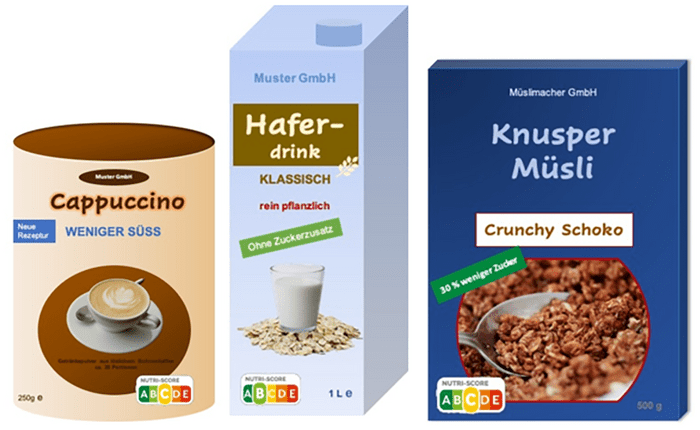The world has a sugar problem. The ongoing obesity crisis is strongly linked to our sugar consumption, and combating this at a societal level is proving difficult. The problem isn’t the sugar we eat directly — it’s the sugar in all the products we eat. There are sugars in pretty much everything: ketchup is over 20% sugar, dairy has a lot of sugar, and let’s not even get started on cereal. You could not eat raw sugar for weeks and still ingest way too much.
Marketers also get sneaky with this. They add labels like “no sugar added” or “now with less sugar” but oftentimes, the sugar is replaced by other sugary products and there’s no significant difference. The trick works surprisingly often, and even for the people that do bother to check the labels, it can be confusing to tell how healthy a specific product is — especially because it’s not just sugar you have to consider, there’s also the fats, the salt content, the vitamins (or lack of vitamins), and so on.
But there could be a way to help people make quick decisions by just checking the label. According to a new study, the NutriScore, a simple color-coded label that measures how healthy a food product is, could help counteract misleading sugar claims.

The NutriScore has been increasingly used in European countries, where it is displayed on the front of the package so that it’s easily visible. The score itself is based on a concept proposed by researchers in 2007, and is affected negatively by things like calorie density, sugar content, and salt content, and positively by things like protein and fiber content. It’s not perfect, and there’s still some debate about the algorithm itself, but it’s a simple way of getting a good idea how healthy your food is in general terms.
Previous research has shown that the Nutri-Score can indeed guide consumers to make healthier food purchases. In the recent research, Kristin Jürkenbeck and colleagues from the University of Göttingent, Germany conducted an online survey of 1,103 German participants. The survey asked participants how they perceive the packaging of three hypothetical products: instant cappuccino, chocolate muesli, and an oat drink. The fictitious products had different combinations of sugar claims and Nutri-Score labels.

When the NutriScore label wasn’t present, the misleading health claims were partially successful at tricking customers. But when the label was there, people were far less likely to believe said claims.
“The results show that, depending on the initially perceived healthiness of a product, the NutriScore is able to prevent health-halo effects caused by claims on sugar. Making the NutriScore mandatory when using nutrition claims would be one possible way to reduce misperceptions about unhealthy food and reduce health-halo effects caused by claims on sugar.”
The health halo effect the researchers are referring to is becoming more and more prevalent as people are trying to consume healthier food. Basically, the effect refers to overestimating how healthy an item is based on a single claim, such as low in sugar or low in fat. Oftentimes, the devil is in the details, and marketers are well aware of this effect and try to use it to the maximum
The sugar part of the nutritional content is particularly important because, based on the new study, consumers pay most attention to ingredients, followed by sugar — this means that consumers will be particularly reactive to any claims about sugar.
“It has been shown that nutrition or taste claims related to sugar on the front-of-pack labels can increase the health perception of the product. In this research, it can be assumed that the taste claim “less sweet” may be considered as problematic, as consumers associate the claim “less sweet” with a reduced sugar content,” the researchers add in the study.
Of course, policymakers can always attempt to ban misleading claims, but enforcing this is a nigh impossibility. Having a label that gives consumers a clear and immediate idea of what they’re buying seems much more realistic. For now, however, the Nutri-Score hasn’t been implemented outside of Europe, even though the system is also backed by the World Health Organization.
The study was published in PLoS.


